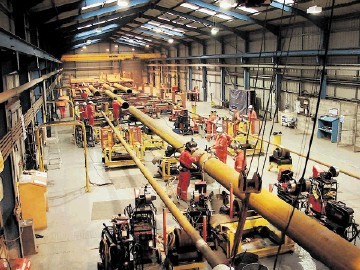
PIPELINE bundles may only represent a small percentage of the total length of installed pipeline in the North Sea but, come the time for their decommissioning, it is of course essential that they too are dealt with in a safe and environmentally responsible manner.
A new study that aims to help the industry meet that objective is to be kicked-off this month. The study is being undertaken by project management and engineering consultancy PDi, with support from eight operating companies, which was secured with assistance from the Aberdeen-based ITF (Industry Technology Facilitator).
Decommissioning has been the focus of extensive discussion within the industry and the growing number of offshore installations due to be decommissioned in the years to come is well documented.
A number of options may be considered when it comes to the decommissioning of subsea pipelines, and a range of different factors are to be considered depending on the type of pipeline and the individual circumstances.
In some cases pipelines may be decommissioned in-situ, in others complete removal may be the preferred option. Pipeline bundles, however, may present particular issues when it comes to decommissioning that require specific consideration.
Graeme MacDougall, operations manager at PDI says of the challenge: “Pipeline bundles allow all the flow lines, water injection, gas lift, chemical injection and control systems required for a subsea development to be incorporated into one carrier pipe, and offer a number of benefits including protection against external hazards, a reduction in the pipeline corridor and cost savings.
“But when it comes to decommissioning, pipeline bundles are substantially different from other pipelines. Although at first glance they may appear similar to trunk lines, as they have a large diameter and sit on the seabed, unlike trunk lines the pipeline bundles that have been installed are all less then 7.5km long.
“Taking into account their relatively short length, they may seem to have more decommissioning synergies with in-field lines than with trunk lines, but their large diameter generally rules out burial.
“However, refloating the bundle for recovery will pose significant engineering and operational challenges, and cutting it into sections for recovery will involve an extensive subsea intervention campaign and multi-handling of abnormal loads.”
According to PDI, there has been no decommissioning of pipeline bundles to date in the UKCS and this timely new study aims to frame the issues with regard to decommissioning subsea pipeline bundles, outline key issues and detail the options available.
Anthony Onukwu, senior technology analyst at ITF says: “DECC’s guidelines for the decommissioning of offshore oil and gas installations and pipelines indicate that any new pipeline bundles which are currently under construction should be designed for future removal.
“However, more than 60 pipeline bundles have already been installed in the North Sea, with an estimated combined length of 250km. Some of these are now approaching decommissioning, and currently there are no guidelines specifically relating to decommissioning of pipeline bundles.
“Consequently, this study should be of value to asset owners developing bundle decommissioning programmes and hopefully it may provide a basis by which DECC (Department of Energy & Climate Change) and stakeholders can assess decommissioning proposals.”
Recommended for you
